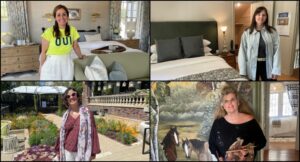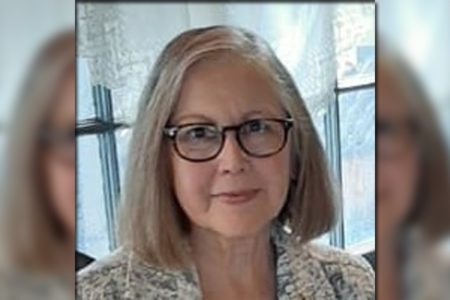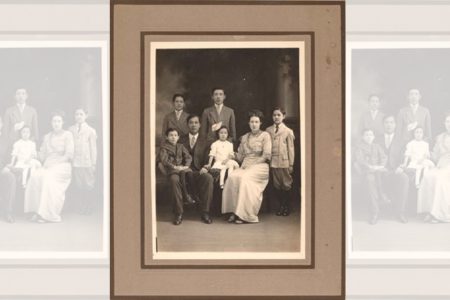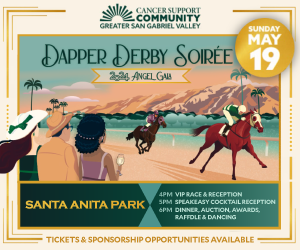
In 1904, Adolphus Busch (of Anheuser Busch Brewing Co. fame) visited Pasadena with the purpose of buying a winter retirement home. A year later he and wife Lilly moved in to the former Cravens mansion “Ivy Wall” at 1021 So. Orange Grove Blvd., this neighborhood being better known as Millionaire’s Row. The property was selected because of all the undeveloped acreage behind it with plans to expand and build beautiful private gardens. By 1906 the Upper Gardens, stretching from the back yards of the Orange Grove Blvd. mansions down to Arroyo Blvd. were complete. There was such a demand for the public to see them that Mr. Busch opened them to all for free.
Credited for designing and building the Busch Gardens was local landscaper Robert Gordon Fraser. He had built Williams Park earlier on the current grounds of the Court of Appeals under the Colorado Street Bridge. At the same time building for Busch he built Hewes Park (gone) in Orange, CA. The Buschs provided the Frasers a bungalow to live in at the gardens across from the Grecian Pergola on Arroyo Blvd.
Busch also owned the north side of Arlington Dr. from Pasadena Ave. to Fair Oaks. Here was the pump house used for the watering of the gardens. In 1910 the former Cravens thoroughbred stables were moved to the pump house grounds. The ground level became an auto garage for chauffeurs dropping off guests to Ivy Wall. The upper level became living quarters for the park superintendent. Also in 1910 the most famous feature, the Old Mill, was built. It was advertised as a perfect copy of an historic mill in Banbury, England. Problem was no such mill existed in Banbury and the design is distinctly Bavarian.

Cyclists:
The “Carefree” (1938) cyclists are Fred Astaire and Ginger Rogers on what is now 1150 Busch Garden Court. The wide concrete path and 36-foot-long stone bench remains, only the bike riders have changed.
In the film Astaire performs an amazing dance while golfing. The police were called when his powerful golf drives cleared the gardens with balls landing on a tea party at a home on Arroyo Dive some 258
yards away! An internet search of this movie reveals amazing footage of these scenes and the gardens.
Huge events were given in the gardens like the 1911 AMA annual convention and the 1912 Shriner’s convention. Busch Gardens rivaled the Tournament of Roses in popularity and had a peak annual attendance of 1.5 million in 1915. In 1918 the Red Cross fete was the largest with the highlight being opera star Mme. Schumann-Heink accompanied by a chorus of 5,000 children.
Concerts, carnivals, fiestas, dog shows and flower shows ensued and hundreds of motion pictures were filmed in the gardens such as The Adventures of Robin Hood, Frankenstein and Gone With the Wind. With the deaths of Adolphus in Germany 1913 and Lilly in Ivy Wall 1928 plus the depression the Busch heirs wanted to unload the property and it was offered twice to the city at reasonable rates. The city declined citing no need for additional park land. In 1938 the gardens manager Edmund Krug worked closely with developers and thus many of the original features exist today.
Note: The author has led many walking tours and given many “Before and After” images lectures with Pasadena Heritage. In 2005 Logan co-curated the Busch Gardens Centennial exhibit at the Pasadena Museum of History and will return to the Museum on September 30 for the images presentation “Uncovering History in Pasadena Busch Gardens”. New material to include historic Hollywood film footage shot in the gardens. See details at https://pasadenahistory.






